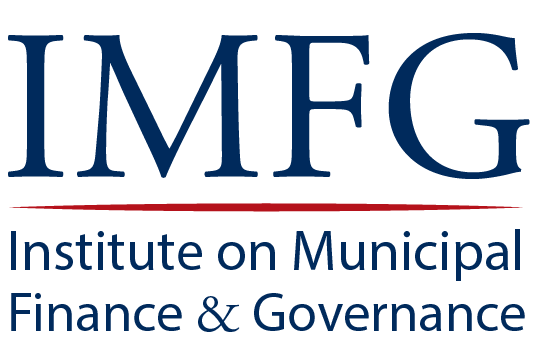IMFG Paper | 2011
The Property Tax–in Theory and Practice
Enid Slack
The property tax is considered to be a good tax for local governments, yet property tax revenues rarely account for more than 3 percent of Gross Domestic Product (GDP) in any country. This paper explains why the property tax is under-used by highlighting some of the problems with the tax.
Find out more »
Find out more »
IMFG Paper | 2011
Financing Large Cities and Metropolitan Areas
Enid Slack
This paper explores the financing of services and infrastructure in large cities and metropolitan areas. Do large cities spend more than smaller cities? Do larger cities have greater fiscal capacity? Are large cities treated differently from other cities? What are the appropriate revenue sources for large cities?
Find out more »
Find out more »
IMFG Paper | 2011
Coping with Change: The Need to Restructure Urban Governance and Finance in India
M. Govinda Rao and Richard M. Bird
This paper identifies some key reforms needed to ensure more citizen participation and greater accountability in urban governance, and to augment and strengthen the capacity of Indian cities to deliver more adequate services and provide needed urban infrastructure.
Find out more »
Find out more »
IMFG Paper | 2011
Revenue Diversification in Large U.S. Cities
Howard Chernick, Adam Langley, and Andrew Reschovsky
Using a panel of data on the financing of the United States’ largest central cities from 1997 to 2008, the empirical results of this paper provide strong support for the hypothesis that a more diversified revenue structure generates more revenues than one that relies primarily on the property tax.
Find out more »
Find out more »
Other | 2011
Amenities for Density: Section 37 of the Planning Act
Larry Beasley
This presentation was delivered by Larry Beasley at an event co-sponsored by Ideas That Matter on December 6, 2006, with two panel presentations: Planning in Toronto: What's the Problem?, chaired by Paul Bedford, including panelists Julie Di Lorenzo, Frank Lewinberg, and Gary Wright; and Amenities for Density: Section 37 of the Planning Act, chaired by John Lorinc, with a presentation by Larry Beasley, and panelists Steve Diamond, and Ted Tyndorf.
Find out more »
Find out more »
Other | 2011
Trends in Public Finance in Canada
Enid Slack and Harry Kitchen
The current division of spending responsibilities among the three orders of government and their ability to use own-source revenues to fund these responsibilities has led to concerns about the existence of a vertical fiscal imbalance. This paper provides an assessment of trends in the levels of expenditures and revenues by all three orders of government, trends that are important in assessing the extent to which there is a fiscal imbalance.
Find out more »
Find out more »
Other | 2011
IMFG Administrator Job Opening
IMFG has an opening for an Administrator. The deadline for applications is February 12, 2018.
Find out more »
Find out more »
Other | 2010
Economies of Scale in Ontario Municipal Services: Are Larger Municipalities Really More Efficient?
Adam Found
A presentation by Adam Found, the 2010 recipient of the Alan Broadbent Graduate Fellowship in Municipal Finance and Governance funded by the Diamante Development Corporation and Dr. James Wong, on April 21, 2010 at the Munk School for Global Affairs.
Find out more »
Find out more »
Municipal World: Enid Slack on Municipal Finance
March 5, 2024
Daily Commercial News: Aaron Moore on Winnipeg’s Infrastructure
February 23, 2024
The Public Record: Alexandra Flynn on the ‘Strong Mayor’ Powers
February 22, 2024
Upcoming Events
-
The Politics of Local Budgeting in Canada: Three Case Studies
June 12 @ 4:30 pm - 6:00 pm
